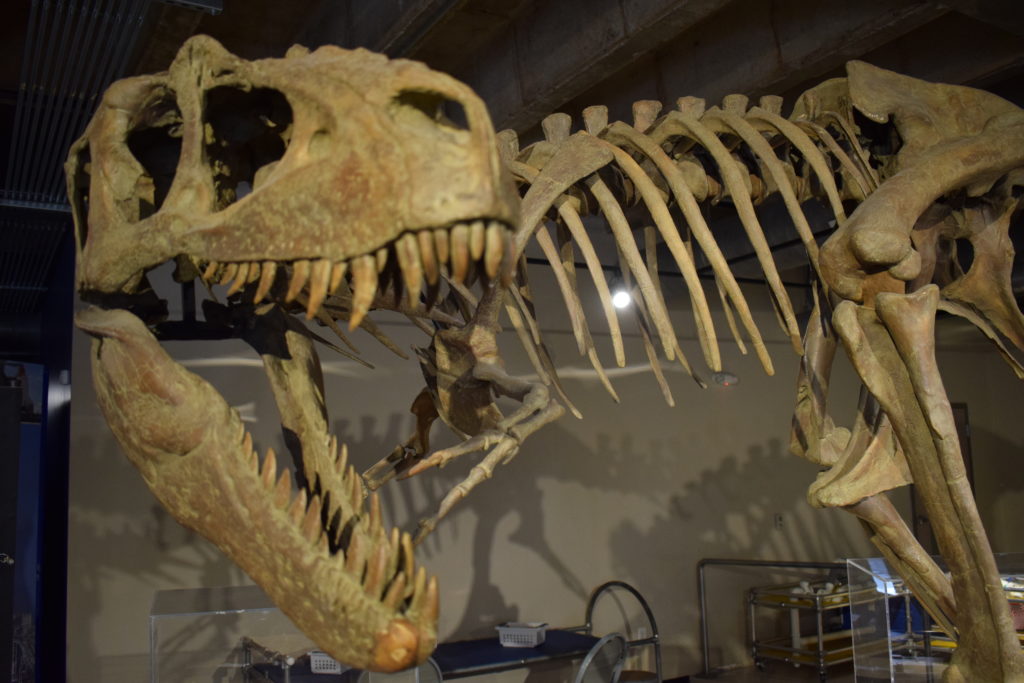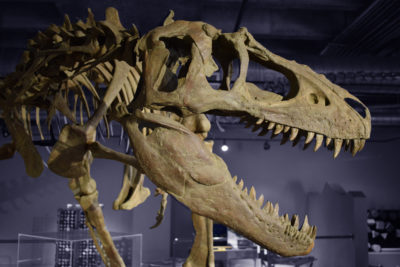Dinosaur
Teratophoneus Curriei

Geologists have found evidence that dates the formation of Earth to about 4,600 million years ago (4.6 billion). At the beginning, Earth was covered with a molten sea. Around 4,300 million years ago, solid rock began to form. Geologists have dated some zircon crystals back to that time of early rock formation, when elements first precipitated out of the cooling molten sea. The fossil record shows us that life began on Earth between 4,100 mya and 3,800 mya, with single-celled prokaryotic organisms.
It wasn’t until 178 million years ago that the first known members of the Tyrannosauroidea superfamily evolved, the Proceratosaurus genus. Teratophoneus curriei lived about 100 million years later, in the Campanian age of the late Cretaceous period. Tyrannosaurus Rex lived about 10 million years after T. curriei.
The Tyrannosauroidea superfamily is in the Coelurosauria clade, in the Theropoda suborder. Theropoda dinosaurs were generally bipedal and carnivorous. Modern birds are theorized to have evolved from the Coelurosauria clade. So far, it also seems that all evidence of feathers on dinosaurs have been found within the Coelurosauria clade.
Kingdom: Animalia
Phylum: Chordata
Class: Reptilia
Clade: Dinosauria
Order: Saurischia
Suborder: Theropoda
Clade: Coelurosauria
Superfamily: Tyrannosauroidea
Family: Tyrannosauridae
Genus: Teratophoneus
Species: Teratophoneus curriei
The fossils of T. curriei were discovered in Utah, in the Kaiparowits Formation. The first discovery was made in 1981 by a Brigham Young University masters student, Sam Webb. More complete remains were later discovered, in the same area, by Jelle Wiersma. The species was named in honor of Philip J. Currie, a paleontologist and museum curator. The AMOS T. curriei is a cast of a sub-adult.
While few fossils are found in western North Carolina, due to limited amounts of sedimentary rock, there is fossil evidence that a distant cousin of T. curriei once lived in North Carolina. The Tyrannosauroidea genus, Appalachiosaurus, may also have once roamed North Carolina during the same period.
Now that is some knowledge we really DIG!







